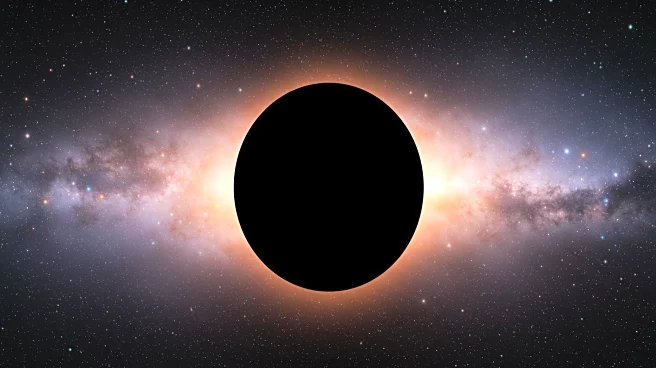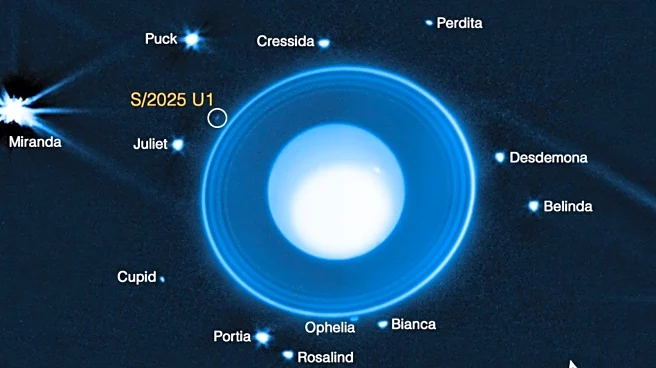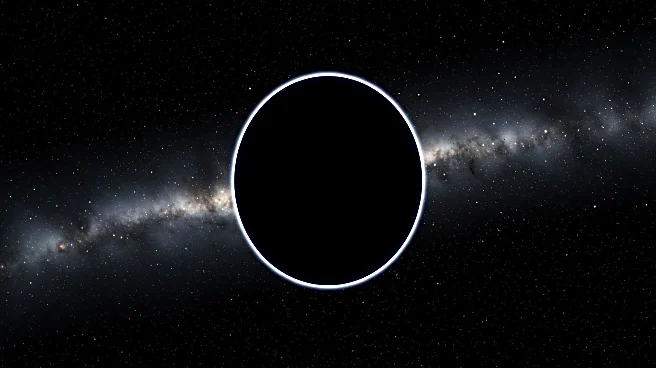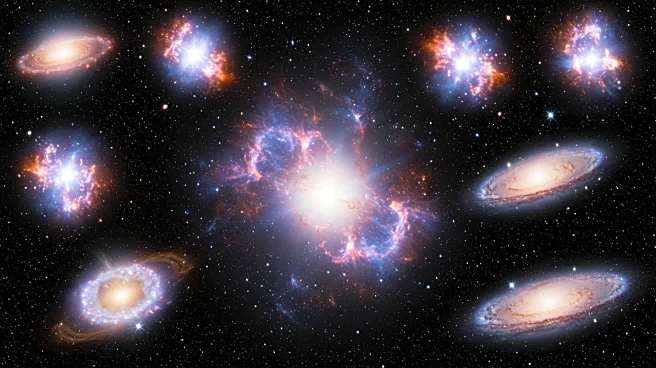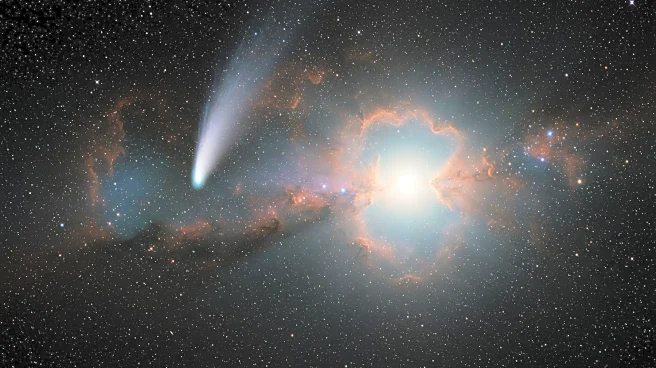What's Happening?
A new study suggests the possible existence of 'Planet Y,' a hypothetical planet orbiting 100 to 200 times farther from the Sun than Earth. This planet is distinct from the previously hypothesized Planet Nine, which is believed to be much larger and more distant. The idea of Planet Y emerged from observations of a 'warp' in the Kuiper belt, a region of icy bodies beyond Neptune. Researchers speculate that this warp could indicate the presence of a small, rocky planet. The study, led by Amir Siraj from Princeton University, is set to be published in The Monthly Notices of the Royal Astronomical Society.
Why It's Important?
The potential discovery of Planet Y could significantly alter our understanding of the solar system's structure and formation. If confirmed, it would add a new member to our solar family, challenging existing models of planetary formation and dynamics. The search for Planet Y and Planet Nine is part of a broader scientific effort to map and understand the outer solar system, which could have implications for astrophysics and planetary science. Discovering new planets can provide insights into the processes that shaped our solar system and the potential for similar phenomena in other star systems.
What's Next?
The upcoming Legacy Survey of Space and Time (LSST) by the Vera C. Rubin Observatory in Chile is expected to provide data that could confirm or refute the existence of Planet Y. As scientists prepare for this observational effort, they are developing techniques to analyze the Kuiper belt and its anomalies. The LSST will scan the southern sky over the next decade, potentially revealing new celestial bodies and phenomena. The race to discover Planet Y and Planet Nine is likely to intensify as new data becomes available, driving advancements in astronomical research and technology.


